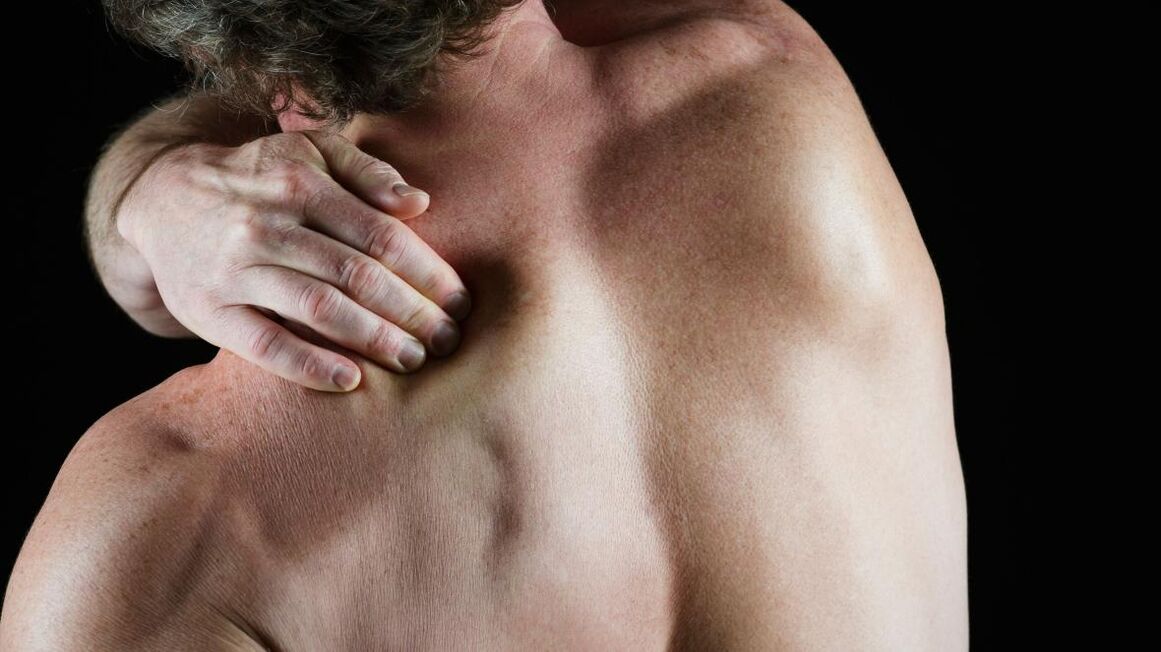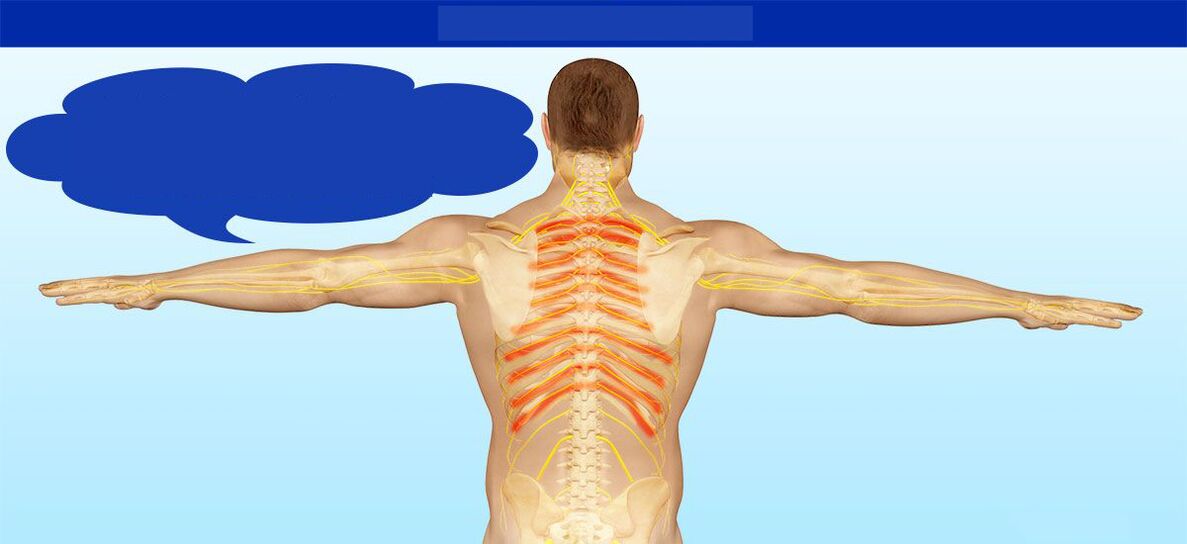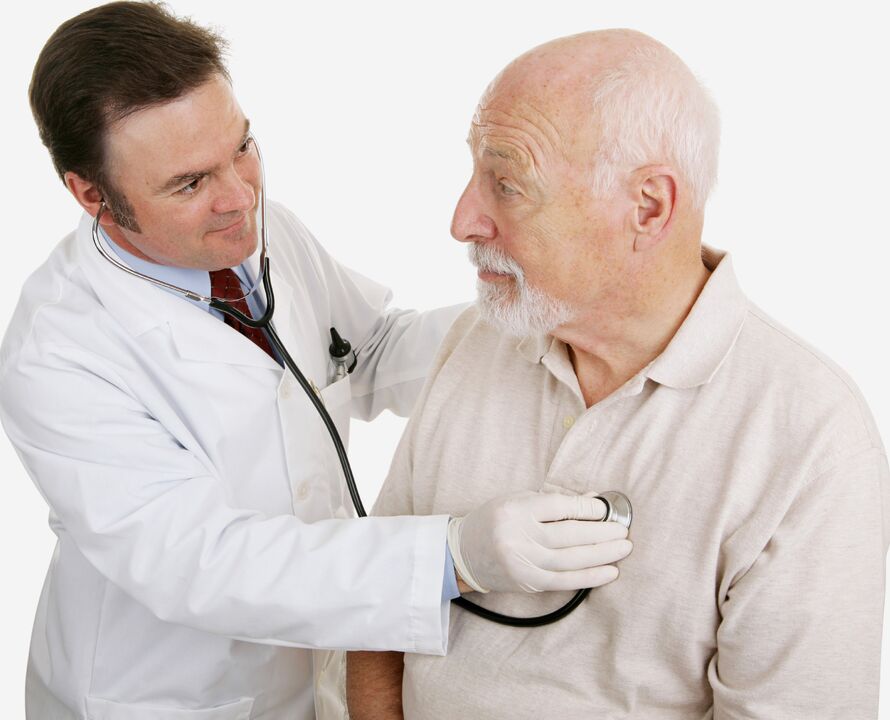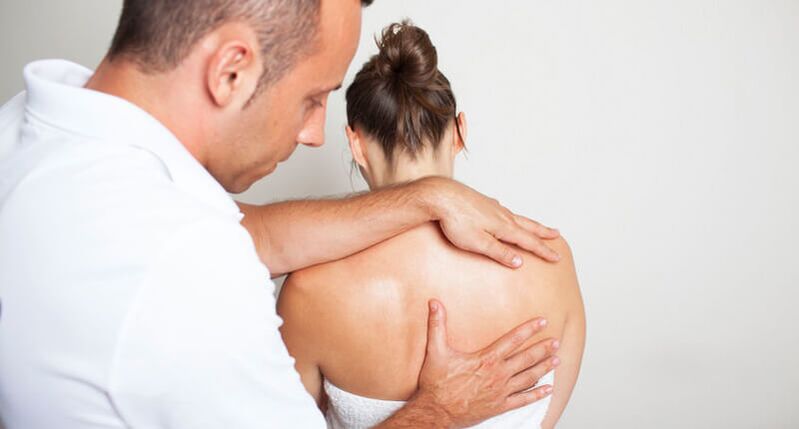
Pain under the left shoulder blade from the back occurs in all age groups of the population, both small children and the elderly.
This fact is due to a huge number of reasons that cause negative sensations, from a long stay in an awkward position for the body to severe pathologies in the body.
A little anatomy
The scapula is a flat triangular bone located next to the thorax from the back in the area from the 2nd to the 7th rib. Performs binding, protective, strengthening and motor functions.
The spatula connects the girdle of the upper limbs with the arms and chest hair. Protects the shoulder joint, protects the lungs and aorta from mechanical stress. Certain muscles that extend from the shoulder blades are designed to strengthen and support the shoulder joints. Thanks to these parts of the skeleton, the mobility of the shoulder girdle is ensured, and their functions extend even to the lower limbs. The bone is supplied with nerve roots coming out of the cervicothoracic region.
Classification
The underlying causes of pain in the shoulder blades on the left side are quite diverse. Painful sensations can be;
- sick;
- as dull pains;
- with increased intensity;
- sharp when you catch your breath;
- withdrawal;
- burning;
- permanent, imperishable;
- sting (lumbago);
- oppressive;
- pulsating;
- point.
Bitan! Often the cause of pain is the long-term presence of the body in an uncomfortable position, as well as stretching the muscles due to physical exertion. They go away on their own and, as a rule, do not require medical intervention.
Long-term pain syndrome, as well as its systematic nature, makes consultation with a specialist necessary. Acute pain in the left shoulder blade requires urgent medical attention, because the factor does not exclude the appearance of angina pectoris, worsening of gastric ulcers, activation of inflammatory processes in the pancreas.
Pain affecting the lower part of the left shoulder blade from the back is often the result of injuries, diseases of the musculoskeletal system and pathology of internal organs.
Musculoskeletal system
Pathologies of the musculoskeletal system are caused by various injuries:
- fractures and cracks caused by impacts, falls, traffic accidents, etc. The excruciating pain intensifies when the person moves. Also, the damaged area swells, bruises appear, mobility is reduced;
- dislocations, which are observed in rare cases and are caused by a strong jerk of the hand or a blow to the shoulder blade. In this case, the bone rotates, moves, occupies an abnormal position. Its lower edge is squeezed between the ribs.
The muscles that connect the shoulder blade and the spine are overloaded, which causes stretching with possible rupture.
Pain in the area of the left shoulder blade on the back caused by trauma occurs immediately after the injury and disappears only with the recovery of the patient.
In addition to injuries, pain in the scapular region of the back is often caused by diseases of the musculoskeletal system.
The syndrome of pain under the shoulder blade, which is a consequence of cervical osteochondrosis (dystrophic-degenerative processes in the intervertebral discs of the spine) is spontaneous, can be painful and reversible. Increased pain is observed when a person stays in a sitting position for a long time and during physical exertion. Taking medication does not bring relief.
A pinched, inflamed intercostal nerve becomes the cause of unbearable pain in the sternum, in the area where it flows. The syndrome intensifies during a person's movement, when he coughs, rains, takes deep breaths, changes body position. The syndrome of permanent or paroxysmal pain is of a sharp, strong, shooting character. Sometimes the pain is manifested in the area of the heart, in the lower part of the back, and is reflected on the neck and arms. It can also affect the blade.

Manifestations of intercostal neuralgia are similar to those caused by heart problems, cholecystitis, angina pectoris, pleurisy. Only a qualified professional can make a correct diagnosis.
In inflammation of the shoulder tendon and capsule of the shoulder joint without direct damage to the joint and cartilage (periarthritis), the pain affects the shoulder joint, sometimes the area between the shoulder blades and the bone itself. They differ in sharpness and amplification at night. The disease is accompanied by mild swelling of the shoulders, elevated temperature within 37-37, 4 ºC, limitation of circular movements of the shoulders. The pathology is widespread and is diagnosed as a consequence of injuries, bruises, increased load on the shoulder joint.
In inflammation of the cervical muscles (myositis), caused by their overexertion or infection, severe pain affects the entire cervicobrachial region, radiating to the shoulder blade, occipital region and arms.
Muscle pain in the scapular region is manifested as a result of physical exertion or impact on the bone.
Pain in a malignant lesion of bone structure or soft tissue refers to the initial manifestation of the disease. At the beginning, they do not differ in intensity and appear occasionally, which makes timely diagnosis difficult. The development of pathological processes leads to an increase in the severity of negative sensations that haunt a person even at rest, mostly at night. They are not eliminated by non-narcotic analgesics. Further, the bone is deformed, the surrounding tissues swell, the skin over the malignant focus changes, and fractures that are not related to injuries occur.
In the presence of an inflammatory process in the bone (osteomyelitis) caused by streptococcus, staphylococcus, salmonella, Escherichia coli and other infectious agents, the patient is exposed to high temperatures, chills and rapid heartbeat. There are complaints of back pain in the area of the shoulder blade and muscles, which are reduced by opening the abscess.
Consider! Painful manifestations below or above the left shoulder blade and in the area of the bone are characteristic of congenital anomalies. These include aplasia (lack of organs), hypoplasia (insufficient bone development), pterygoid scapula, Sprengel's disease. At the same time, a person often suffers from a cosmetic defect and limited physical activity.
Disc herniations and protrusions of the discs of the cervical spine lead to compression of the nerve roots by bone formations, which causes pain during movement, especially when the head is bent.
Heart and blood vessels
Back pain below the left shoulder blade is often the result of cardiovascular problems.
Chest pain in the center or left, with extension to the upper body, signals a myocardial infarction. At the same time, there may be a strong tingling sensation under the left shoulder blade. It is impossible to clearly characterize the pain syndrome. It can be painful, or it can manifest in an acute form.
Lack of myocardial blood supply causes an attack of angina pectoris, characterized by pressure or squeezing in the chest, which often radiates to the left shoulder blade, arm, and lower jaw. In this case, there may be an increase in blood pressure, sweating and paleness.

Attacks of angina usually occur in stressful situations or due to increased physical exertion. They are stopped by nitroglycerin. When the pain syndrome lasts longer than 20 minutes or medications do not provide relief, myocardial infarction is suspected.
High blood pressure or atherosclerotic lesions lead to aneurysm (enlargement) or dissection of the aorta (incomplete rupture or rupture of the endothelium, followed by the spread of blood between the layers of the vessel wall).
Small aneurysms do not manifest in any way. As they increase, the person begins to feel dull back pain. Exfoliating aneurysms are characterized by a pronounced clinical picture. With tears, the painful sensation is sharp and short-lived. It affects the chest and back, leading to a reflex drop in blood pressure and fainting. After some time, the person feels burning pains in the chest, arms, neck, under the left shoulder blade. The syndrome cannot be eliminated with the help of available medications. In such a condition, a fatal outcome is very possible, so urgent medical help is needed.
Pain under the left shoulder blade occurs due to:
- ischemia - lack of blood flow to the heart;
- pericarditis - inflammatory processes in the pericardium;
- endocarditis - an inflammatory disease of the inner lining of the heart;
- myocarditis - inflammation of the heart muscle.
Disorders in the autonomic nervous system cause vegetative dystonia. The disease is characterized by a number of manifestations, including pain below the left shoulder blade, similar to the heart. In addition, the person suffers from irritability, memory impairment, increased sweating, etc.
Respiratory system
Painful sensations under the left shoulder blade are not excluded in diseases of the respiratory system.
With left pneumonia, there is mild pain in the chest or under the left shoulder blade - dull, painful character, intensified during movement or deep breathing. Accompanying symptoms include fever to critical values, shortness of breath, shortness of breath and more.
With the formation of necrotic cavities in the left lung, accompanied by inflammatory processes and the formation of pus, a pain syndrome is observed in the chest, in some cases with radiation to the scapula. The pathology is accompanied by cough with purulent sputum, difficulty breathing, lack of air during breathing.
The diagnosis of left-sided pleurisy (accumulation of fluid in the pleural cavity) is made on the basis of the following symptoms: acute chest pain, sometimes radiating under the shoulder blade, fever, shortness of breath, dry cough, dry cough and other manifestations.
Bitan! Almost all diseases of the respiratory system, accompanied by pain, are characterized by coughs of various natures.
The appearance of pain under the left shoulder blade is also possible due to acute bronchitis, tracheitis or tracheobronchitis.
Gastrointestinal tract
Pain in the left shoulder blade is often characteristic of pathologies of the gastrointestinal tract and requires urgent medical intervention.
Ulcerative lesions of the stomach and duodenum are characterized by paroxysmal pain. They are caused by prolonged starvation. They can appear immediately after a meal or later.
Perforated ulcers cause acute unbearable pain, accompanied by fever, nausea, vomiting, etc. Failure to provide care to the patient within 12 hours from the onset of the disease leads to acute intoxication and can cause the death of the patient.
Inflammation of the pancreas in the acute form causes pain in the upper, middle or left abdomen. In some cases they give out under the shoulder blade. Pathology causes nausea, vomiting, bloating and other disorders of the digestive system.
Some injuries cause rupture of the spleen. This does not lead to immediate internal bleeding, but causes dull pain under the left shoulder blade. In such cases, delaying treatment can cost the patient his life.
In addition, esophageal spasm, calculous cholecystitis, gastroegophagitis, and reflux may be to blame for left shoulder blade pain.
Diagnostic methods, treatment
In any case, the specialist examines the patient about the accompanying manifestations, palpates the painful area, determines blood pressure and heart rate stability in order to exclude pathological processes that may require urgent action.

Self-diagnosis is strictly forbidden. If the back hurts for any reason for a long period of time, it is necessary to visit a therapist who will determine the need for a special diagnosis according to the general clinical picture.
Precise determination of the cause of pathology is performed using:
- general and biochemical blood tests;
- urine analysis;
- radiography for possible problems with the musculoskeletal system and respiratory organs;
- electrocardiogram to rule out heart disease;
- computed tomography and magnetic resonance imaging with insufficient data obtained by radiography;
- fibrogastroduodenoscopy in suspected gastrointestinal tract disease.
Depending on these diagnostic measures, the therapist determines why the pain is manifested, then gives a referral to a narrow-profile doctor (traumatologist, vertebrologist, cardiologist, gastroenterologist or neuropathologist), who determines the treatment regimen.
Bitan! For pain below the left shoulder blade, analgesics only weaken the syndrome and often prevent a reliable diagnosis. Pain medications should only be prescribed by a specialist as part of a comprehensive treatment.
There is no universal cure for pain under the left shoulder blade. As the patient recovers, the negative symptom will gradually disappear. Therapy is aimed at eliminating the underlying disease and includes a number of methods.
To avoid pain in the shoulder blades, you need to take care of your health and, if a negative symptom occurs, seek professional help immediately.




























